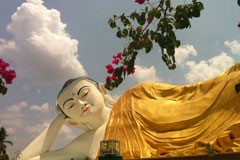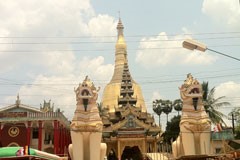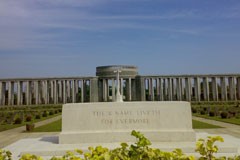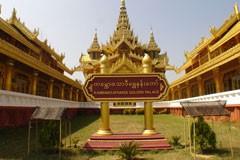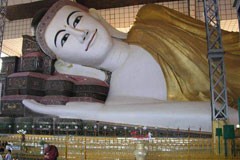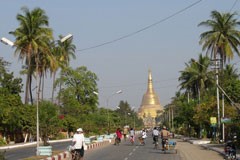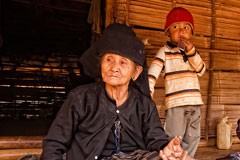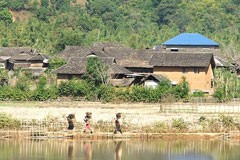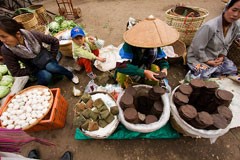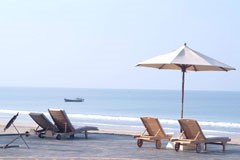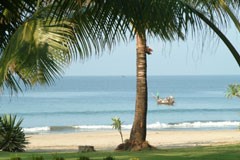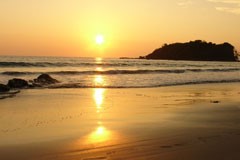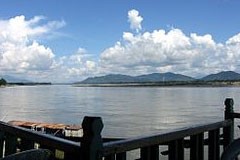Mrauk U
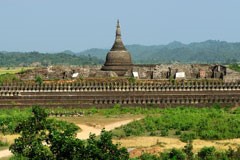 |
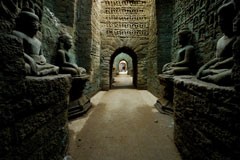 |
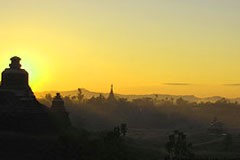 |
Mrauk U: Stone carved pagodas from 14th to 17th century can be seen only in Mrauk U. It was located at the western side of Myanmar. From Yangon fly to Sittwe,the capital of Rakhine State,then take a private boat to Mrauk U. The boat trip will take about 5 Hours depend on the current along the Kaladan River. Mrauk U was formerly the capital of Mrauk U dynastry and before Sittwe was the capital Rakhine State.Most of the Pagodas in and around Mrauk U were from the 14th to 17th Century,the flourish time from Mrauk U dynastry. The Shittaung Temple,means 80,000 buddha images, Htokekanthein Temple, the ordination Hall, Andaw Thein temple, the pagoda with tooth relice, Koethaung Temples, it likes bororbordor from Indonesia are the famous sightseeings in Mrauk U.
Geography
Mrauk U lies roughly 11 km east of the Kaladan River on the banks of its minor tributaries. The town is located on a small outcrop of the Rakhine Yoma on the eastern side of the Kaladan's alluvial plain. Thus, the surrounding countryside is hilly yet also contains a great deal of marshes, mangroves and lakes.
Climate
Mrauk U, like much of Rakhine State, is situated in a coastal tropical monsoon rainforest climate region. The town receives over 1200mm of rain a year from the Southwestern Monsoon, making it one of the wettest regions in Myanmar. The Monsoon season usually begins in late May and ends by mid October.
Although located in a tropical region, Mrauk U enjoys lower temperatures when the Northeastern Monsoon falls. From mid October to mid March during the Cool Season, temperatures can drop to 13°C. This season coincides with the tourist season for Myanmar.
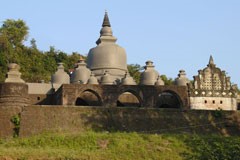 |
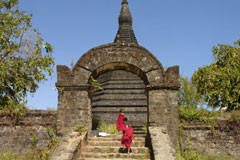 |
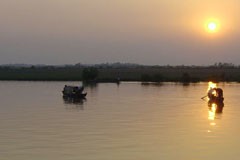 |
Religious Centre
As Mrauk U and her kingdom prospered, the kings, ministers and peasants built many pagodas and temples around the town to reflect their faith. Thus, Mrauk U houses a rich collection of temples and pagodas second only to the Central Burmese town of Bagan, in Myanmar. Most of Mrauk U's temples were constructed of hewn stone bricks, unlike the mud and clay bricks of Bagan.
The most notable temples in Mrauk U are the Shite-thaung Temple (Temple of 80,000 Images or Temple of Victory), Htukkanthein Temple (Htukkan Ordination Hall), the Koe-thaung Temple (Temple of 90,000 Images) and the Five Mahn pagodas.
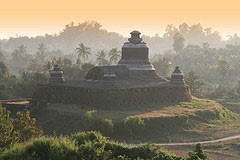 |
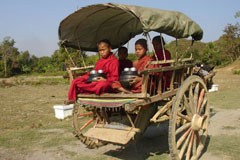 |
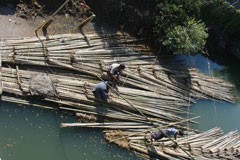 |
Tourism
Today, Mrauk U is a major archaeological and tourist destination. The main attractions are the temples and ruins around the town. The remains of the main palace roughly form the centre of the town. The most popular mode for tourists to travel to Mrauk U is to take a domestic flight from Yangon to Sittwe and board a boat from Sittwe against the Kaladan River. The hotels in Mrauk U also arrange private boat services to and fro Sittwe.
Mrauk U houses a growing tourist industry, as it has only recently become a reachable tourist destination.


